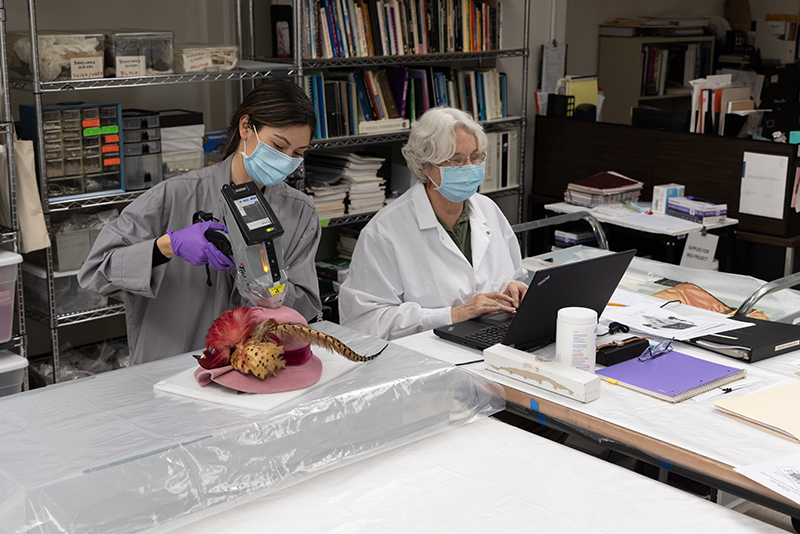
In 2019, The Museum at FIT (MFIT) was awarded a grant from the Institute of Museum and Library Services, as part of their Museums for America program, to test the museum’s collection for hazardous substances. Toxic materials, including mercury, lead, and arsenic, were routinely used in the production of 18th– and 19th-century garments and accessories and were slow to be phased out. In fact, as late as the 1970s, toxins were still found in some accessories.
To identify the presence of heavy metals, MFIT researchers selected representative objects and tested them with an XRF spectrometer. MFIT also presented the online symposium “Material Evidence: Assessing Risk in Museum Collections,” which has been watched on YouTube more than 2,700 times. As a result of this effort, MFIT recently published the guidelines Handling Concerns for Fashion Collections, detailing their findings and suggesting best practices for handling potentially contaminated exhibition materials.
